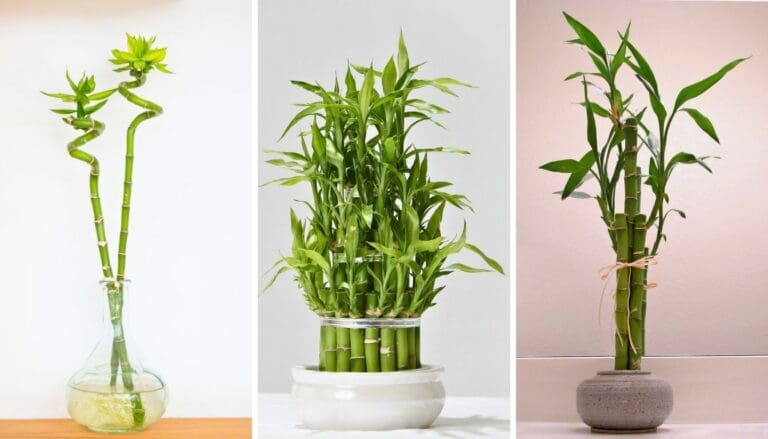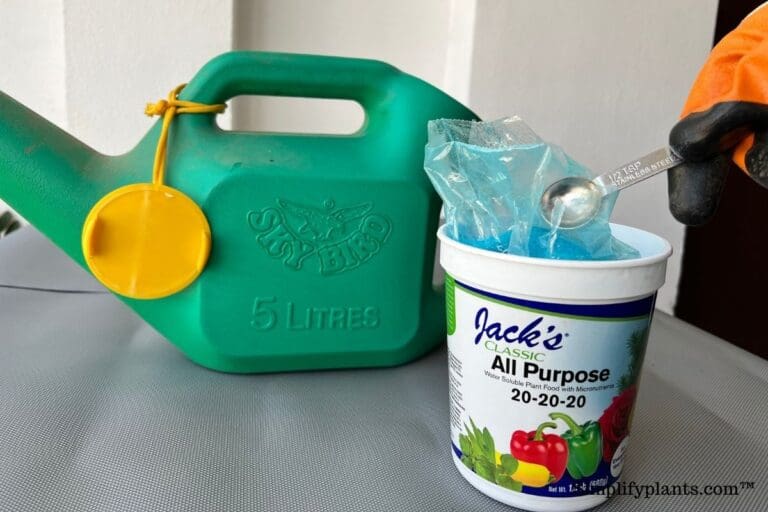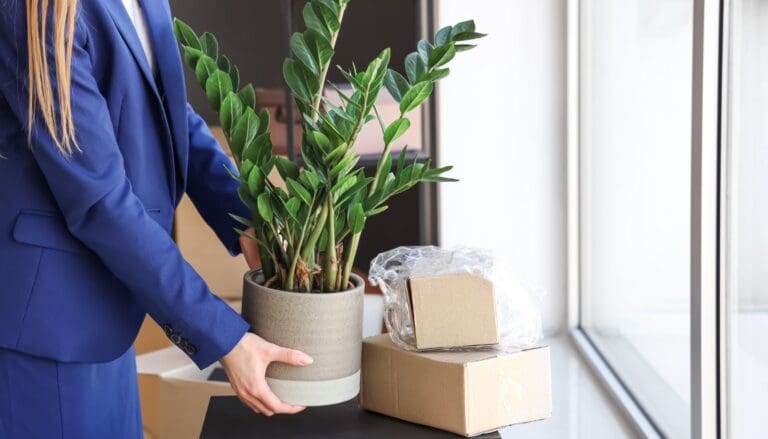7 Houseplant Pests You’ll See More in Summer
I love having houseplants, but summer always seems to bring in more bugs to my indoor garden. The warm weather just wakes them up, and suddenly, my plants have a lot more company than I’d like.
Let’s talk about the most common summer houseplant pests and how you can keep them under control. With a few simple tricks, it’s totally possible to keep your plants healthy, even when bugs try to move in.
Please note: Simplify Plants is reader-supported. As an Amazon Associate, I earn from qualifying purchases made by our readers with no extra cost added to you all! Some links in the post are affiliate links and I get a commission from purchases made through links in the post.
1) Spider Mites

When the days get hot, spider mites seem to show up out of nowhere. I usually find them under the leaves, spinning tiny webs—if I look really close, I can spot the little bugs moving around.
My plant’s leaves might look dry or speckled, sometimes even yellow. Occasionally, leaves just drop off early, which is always a bad sign.
Spider mites suck the sap out of the leaves, which weakens the plant. They spread like crazy in warm, dry air, so I try to keep things a bit more humid around my plants.
Misting leaves or running a small humidifier helps. If I spot spider mites, I’ll gently wash the leaves with water to remove them, or wipe them with a damp cloth.
For stubborn infestations, I use insecticidal soap or neem oil spray, making sure to cover the whole plant, including underneath the leaves. I check my plants often, especially in summer.
Regular inspections let me catch problems before they get out of hand. I also keep new plants separate for a bit, just in case.
Healthy plants are less likely to get badly hurt by spider mites. I try to give my houseplants the right light and water, so pests have a harder time taking over.
2) Aphids
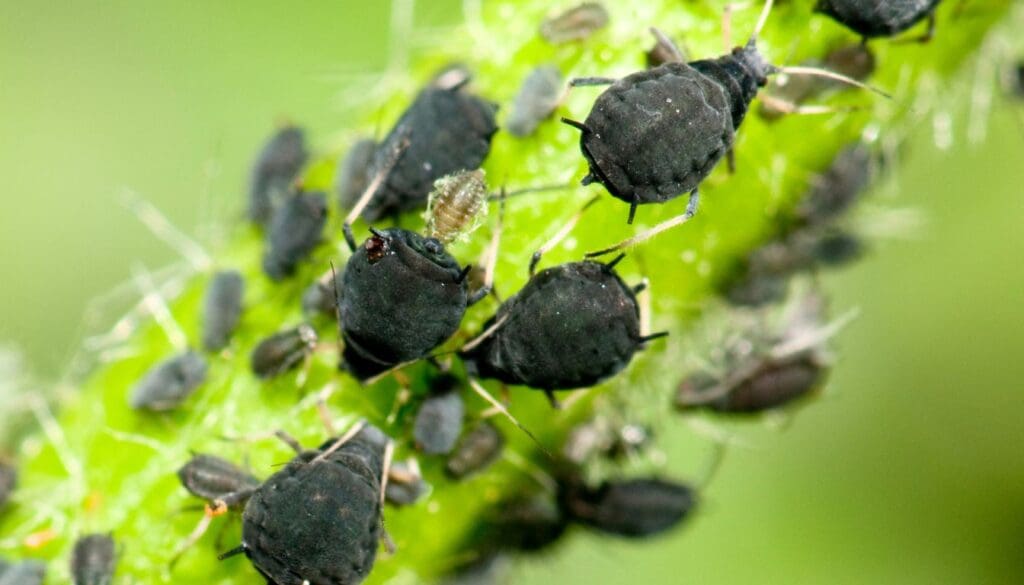
Aphids are tiny, but they love warm weather. I spot them on stems and leaves, and they can be green, black, or white—sometimes all hanging out together in big groups.
Aphids suck sap from plants, causing leaves to curl or turn yellow. Sometimes there’s a sticky substance left behind, called honeydew, and that can attract ants.
I check the undersides of leaves because aphids love to hide there. Acting fast is key so they don’t spread to my other plants.
Usually, I spray my plants with water or wipe them off with a damp cloth. If there are a lot, I use mild soapy water and rinse afterward.
Neem oil or insecticidal soap works well if I need something stronger. I try not to over-fertilize, since soft, new growth brings in more aphids.
If a plant is infested, I move it away from the others. Regular checks help me catch aphids early. Just paying attention makes a big difference.
3) Mealybugs

When I see little white, cottony blobs, I know mealybugs have arrived. These bugs love to hide in leaf joints or under leaves, and they suck sap, making leaves look weak and yellow.
Mealybugs show up more in warm, humid weather, so I check my plants more often in summer. They blend in surprisingly well, especially around stems and leaf edges.
I act fast if I see even a couple. A cotton swab dipped in rubbing alcohol does the trick—it kills them on contact and doesn’t hurt most houseplants.
Sometimes I just rinse the plant in the sink or shower to wash away bugs. For bigger problems, I use insecticidal soap or a gentle spray made for houseplants, making sure I get all the hidden spots.
Keeping plants healthy helps prevent mealybugs. I avoid overwatering or crowding my plants, since damp, crowded places attract pests.
I clean up dead leaves, too, because mealybugs can hide under debris. When I bring home new plants, I check them carefully and keep them separate for a couple weeks.
With regular checks and quick action, I keep mealybugs under control and my plants looking their best.
4) Whiteflies

When I spot tiny white insects fluttering around, it’s usually whiteflies. They hide on the underside of leaves, so I sometimes miss them at first.
They suck sap from the plant, and leaves can turn yellow and drop off. Whiteflies are especially active in warm months, and if I brush past a plant, they fly up in a little cloud.
I always check the backs of leaves for small, white, powdery bugs. Sticky traps help me catch adults and keep tabs on the problem.
I’ll gently spray my plants with water to knock whiteflies off, or use a soapy water solution to get both adults and eggs. It’s important to cover all sides of the leaves.
If things get out of hand, I move affected plants away from the healthy ones. Neem oil sprays can help, but I test a small area first, just to be safe.
I repeat treatment weekly until the whiteflies are gone. Regular care and checking your plants is honestly the best way to keep whiteflies from taking over.
5) Fungus Gnats

Fungus gnats are tiny black flies that love buzzing around my houseplants in summer. They hover near the soil, and their larvae hang out in the top layer of damp potting mix.
When I see fungus gnats, I know my soil is probably too wet. The larvae nibble on the roots, which can slow down plant growth. The adults are mostly just annoying.
I let the soil dry out between waterings to keep fungus gnats under control. Dry soil makes it tough for their eggs and larvae to survive.
If gnats stick around, I use yellow sticky traps near the pots to catch the adults. Sometimes I sprinkle a thin layer of sand or small gravel on top of the soil, so adults can’t lay eggs as easily.
For stubborn infestations, I water with a mix of one part hydrogen peroxide to four parts water. It helps kill larvae without hurting my plants.
Keeping my plant area clean makes a big difference. I pick up old leaves and spilled soil, and I always dump out standing water in trays or saucers.
With these steps, fungus gnats don’t stand much of a chance, and my houseplants stay happier all summer.
6) Scale Insects
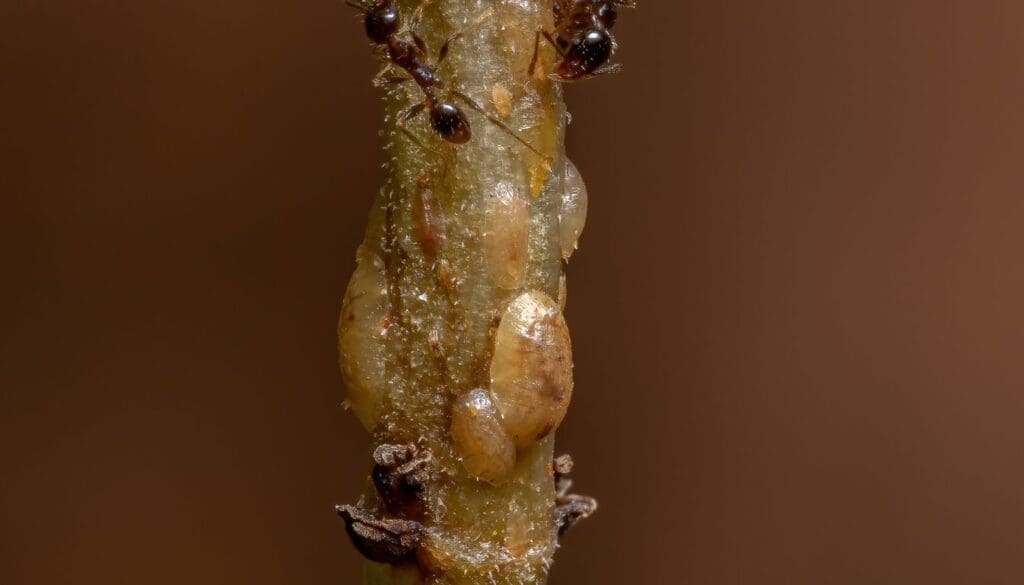
Scale insects look like tiny bumps on plant stems and leaves. They don’t move much, so it’s easy to mistake them for part of the plant.
They hide under a tough, waxy shell and suck sap, which leads to yellow leaves and sticky residue. Some are brown or tan, and others are almost see-through.
The tricky part is how well they hide. If I miss a few, they spread to my other plants before I know it.
I always check the undersides of leaves and along stems, especially in summer. When I see scale insects, I use a soft cloth or cotton swab dipped in rubbing alcohol to wipe them away.
For bigger infestations, I try insecticidal soap or neem oil spray. Treating the whole plant and checking again every few days is key.
To protect my houseplants, I quarantine new plants before bringing them inside. Regular checks and quick action help me keep scale insects in check.
7) Thrips

I’ve found that thrips are super tiny insects and honestly, they’re hard to spot. They look like skinny, pale bugs and move fast if I disturb them.
Usually, I notice them because of the silvery or speckled damage they leave on my plant’s leaves. Thrips like to hide on the undersides, sucking out plant juices.
This causes leaves to fade, get brown spots, or curl up at the edges. Sometimes I see small black dots—that’s their frass, or insect droppings.
They spread quickly in warm, dry conditions, so I check my plants more often in summer. I make sure my plants aren’t touching, since thrips crawl from plant to plant.
When I find thrips, I rinse the plant with water to knock some off. Then I use insecticidal soap or neem oil, spraying the leaves—especially underneath.
I repeat every few days to catch any new bugs. Isolating the affected plant helps stop thrips from spreading to the rest.
I check new plants before bringing them inside. If I catch thrips early, my plants usually bounce back pretty well.
Why Houseplant Pests Thrive in Summer
Pests are way more common in summer because the heat and higher humidity make it easy for them to grow and spread. Honestly, sometimes my own plant care mistakes make things worse.
Environmental Factors Fueling Pest Growth
Warm temperatures are perfect for fast pest growth. When my home heats up, pests like spider mites, aphids, and fungus gnats get way more active.
These bugs reproduce quickly when it’s warm and humid. High humidity levels also help pests—mealybugs and scale insects especially love moisture.
If I use a humidifier or keep my plants too close together, I might accidentally be inviting pests. Bugs can sneak in through open windows and doors too.
If I move plants outside or leave windows open, it’s just easier for pests to get in. Even bright sunlight can stress my plants and make them easier targets for bugs.
How Plant Care Mistakes Worsen Pest Problems
If I overwater my plants in summer, the soil just stays too damp. That’s basically an open invitation for fungus gnats and root-feeding insects to move in.
Not checking the leaves or soil often enough? Pests get way more time to grow and spread. Forgetting to remove dead leaves or leaving dirty pots around just makes it way too easy for bugs to hide out.
Sometimes I’ll get a little heavy-handed with the fertilizer, and that can make new leaves soft—exactly what pests love to munch on. Skipping repotting old soil? Well, pest eggs can just hang out and hatch later on.
Proactive Strategies to Prevent Summer Pest Infestations

In summer, houseplant pests seem to multiply overnight if I’m not paying attention. Honestly, just a few simple habits make a big difference.
Maintaining Healthy Indoor Environments
I try to keep my plants spaced out so air can move around. Good airflow means leaves dry faster after watering, and pests really aren’t fans of that.
Once a week, I grab a damp cloth and wipe down window sills and pots. It gets rid of dust and random debris where bugs might hide. I always use sterile soil and clean pots when I repot—no need to invite trouble.
I keep an eye on humidity with a basic hygrometer; it’s pretty handy. If things get too damp, especially after watering, I’ll crack a window or turn on a fan.
Oh, and I never let water sit in saucers. Wet spots are basically a bug party waiting to happen. My motto: less moisture, fewer bugs.
Early Signs to Watch For
Every time I water, I give my houseplants a quick check. Catching stuff early really saves headaches.
I look for sticky spots on leaves or stems, which usually means aphids or scale. Fine webbing? That’s probably spider mites—they leave those thin, silky threads.
If I spot tiny, dark bugs or see gnats flying around the soil, I know I need to do something, and fast. I always check both sides of the leaves, since pests love to hide underneath.
New growth gets extra attention, because pests seem to go after those tender shoots first. For convenience, I keep a simple checklist:
- Check leaves (top and bottom)
- Look for webbing or sticky residue
- Examine soil and stems closely
- Watch for flying or crawling insects
Staying alert helps me catch problems before they spread.
Frequently Asked Questions
I’ve noticed houseplants get pests like spider mites, aphids, and fungus gnats, especially when it’s hot out. Spotting the problem early and knowing what to do can really save your plants from a lot of damage.
What are some signs of common summer pests in houseplants?
Usually, I see sticky leaves, white webbing, tiny moving dots, or holes in the leaves. Some pests leave behind a fine powder or a weird fuzzy stuff.
Leaves turning yellow or dropping off can also mean bugs are around.
How can I identify different types of bugs on my indoor plants?
I look at the shape and color. Spider mites are tiny, red or brown, and like to spin webs. Aphids are small, green, yellow, or black, and they always seem to cluster together.
Mealybugs look like little bits of cotton—pretty easy to spot. Whiteflies are those tiny white insects that flutter up if you bump the plant.
What are the best ways to eliminate tiny bugs found in houseplant soil?
I let the soil dry out, since a lot of bugs (like fungus gnats) need moisture to survive. Sticky traps or a layer of sand on the soil can catch the adults.
Neem oil or even diluted hydrogen peroxide will usually take care of eggs and larvae.
How can I treat brown insects on my indoor plants naturally?
I wipe the leaves with a damp cloth, or sometimes I’ll spray a mix of water and dish soap. Neem oil’s a favorite of mine since it’s natural and usually safe for most plants.
If the bugs are stubborn, I’ll just cut off the worst leaves and keep the plant away from others until it’s clear.
What steps should I take to prevent flying bugs from infesting my indoor plants?
I make sure I’m not overwatering—flying bugs like fungus gnats love damp soil. I use well-draining soil and check for soggy trays or leaks.
Sometimes I’ll put up yellow sticky traps nearby for a little extra peace of mind.
Can you show me pictures to help identify common houseplant pests?
I can’t display images right here, but honestly, a quick online search for “spider mites,” “aphids,” or “mealybugs on houseplants” will bring up plenty of photos. Tons of plant care websites have galleries that make pest identification a lot easier.
Recommended Garden Supplies
| Product Image | Our Recommended Gardening Supplies | Check Offers! |
|---|---|---|
Top Top
Top
Top
Top
Top
Top
Top
Top | rePotme Houseplant and Tropical Classic Potting Soil Mix | Check Offer On Amazon |
 Top
Top
Top
Top
Top
Top
Top
Top | Espoma Organic Indoor Plant Food | Check Offer On Amazon |
 Top
Top
Top
Top
Top
Top
Top
Top | GooingTop LED Grow Light 6000K Full Spectrum Clip Plant Growing Lamp | Check Offer On Amazon |
 Top
Top
Top
Top
Top
Top
Top
Top | Soil Moisture Meter | Check Offer On Amazon |
 Top
Top
Top
Top
Top
Top
Top
Top | Govee Hygrometer Thermometer, Bluetooth Enabled! | Check Offer On Amazon |
 Top
Top | LEVOIT Humidifiers for Large Room(Best For Plants) | Check Offer On Amazon |
 Top
Top
Top
Top
Top
Top
Top
Top | Upgraded DIY Automatic Drip Irrigation Kit, 15 Potted Houseplants Support | Check Offer On Amazon |
 Top
Top
Top
Top
Top
Top
Top
Top | Stainless Steel Heavy Duty Gardening Tool Set | Check Offer On Amazon |
 Top
Top
Top
Top
Top
Top
Top
Top | Bonide Insecticidal Soap | Check Offer On Amazon |
 Top
Top
Top
Top
Top
Top
Top
Top | Bonide 32 oz Spray Neem Oil for Organic Gardening | Check Offer On Amazon |
 Top
Top
Top
Top
Top
Top
Top
Top | Garden Safe Fungicide | Check Offer On Amazon |


